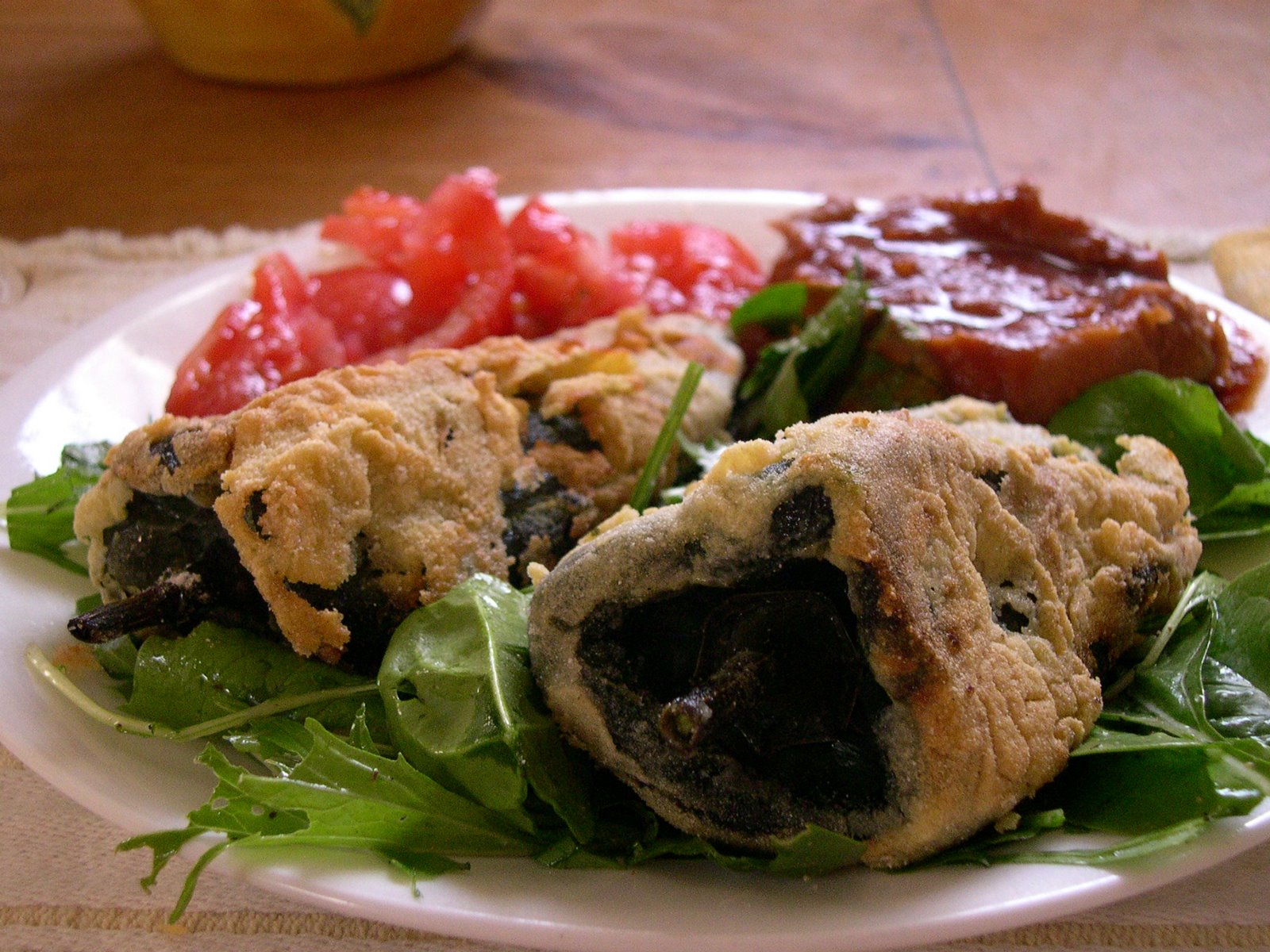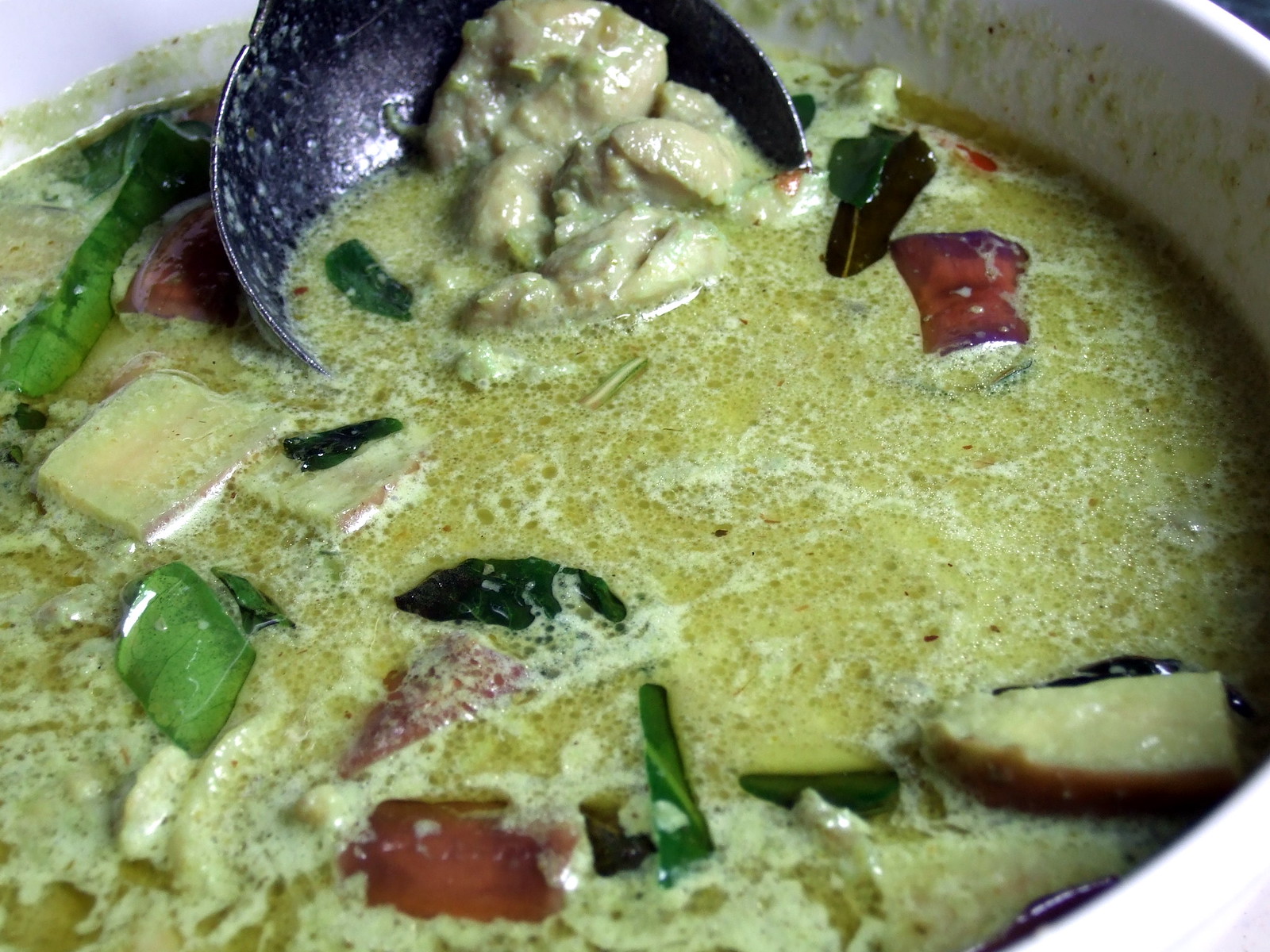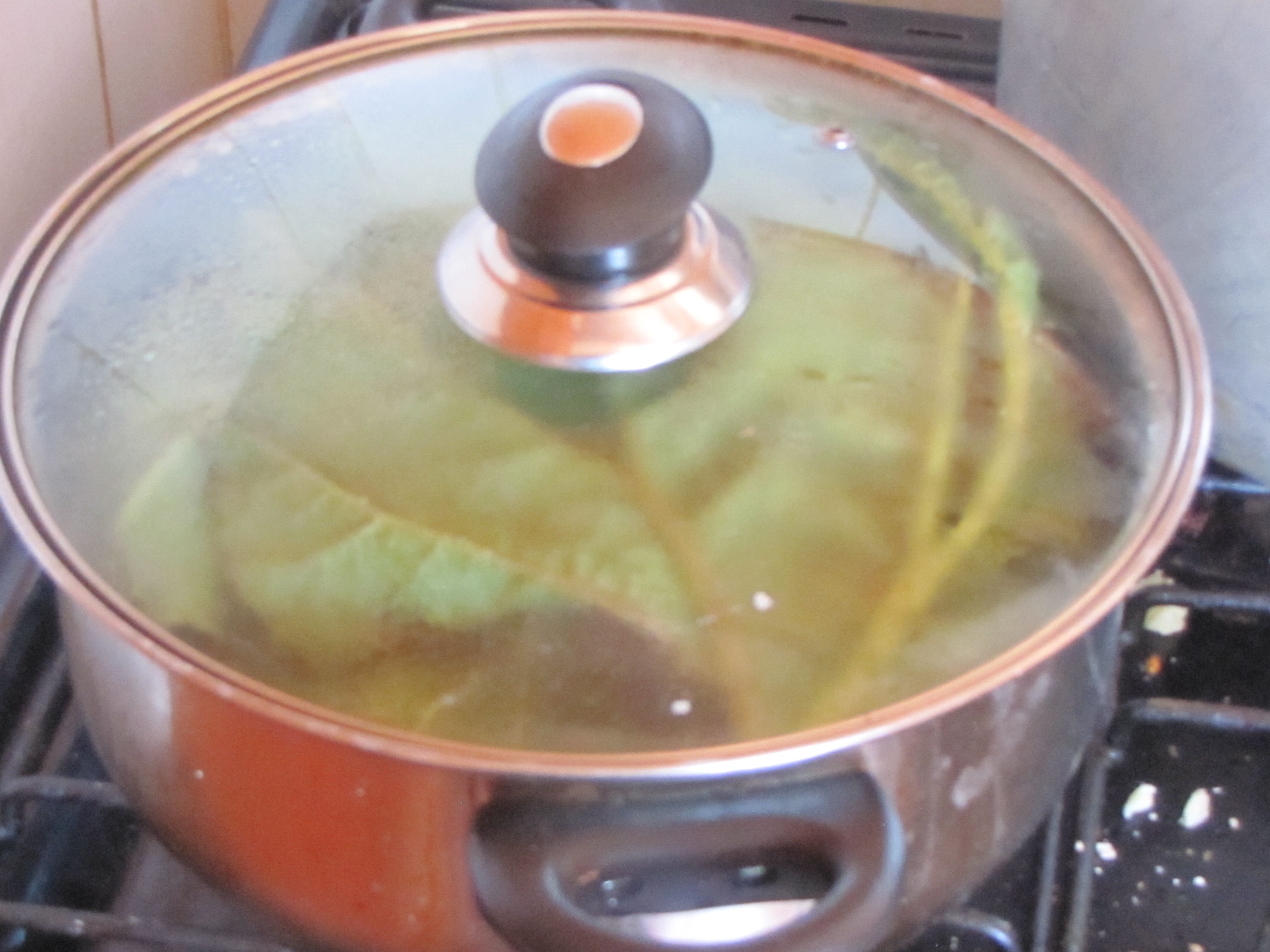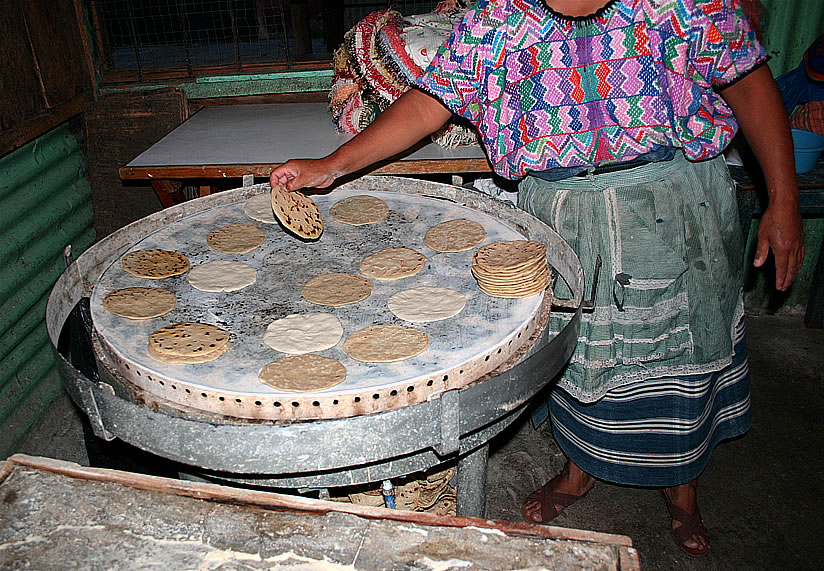Guatemalan food is considered one of the best in the world, and its reasons are no mystery. The cuisine is based on centuries of evolution and a fusion of American, Mexican, and Spanish gastronomy, giving it an unparalleled ingredient diversity. The cuisine has been recognized with its own international award: the Gold Ashoka by the country’s Ministry of Tourism and the Gourmet Foundation. Let’s get to know some of the most popular and typical dishes that form a part of traditional Guatemalan food.
Kak’ik
Kak’ik is one of the best dishes of the Guatemalan department of Alta Verapaz. It is a kind of soup/stew made with chicken, potatoes, peppers, corn, and onions. Rice cooked in lard is served on the side along with tortillas and salad. Kak’ik can be mixed into scrambled eggs for breakfast and used as a spread in quesadillas or salads!

By Hermann Luyken, CC BY-SA 3.0, Link
Pepian
Pepian comes with pre-hispanic origins. It is derived from the Nahuatl word “pepian”. This is a full-course meal usually eaten at lunchtime, it also can be eaten in the morning for breakfast. Pepian is a mixture of fruits, salad, herbs/spices, and seeds that can be served as a soup, stew, sauce, or main course. It is considered to be the Guatemala National Dish.

By Josué Goge, CC BY 2.0, Link
Fiambre
Fiambre is a traditional Guatemalan dish for the celebration of Mexican Holy Week in Mexico. It is, for all intents and purposes, a meat pie. The base ingredient is not something you’d expect since Guatemala City is not known for its pork, but it still does a very good job with it. Fiambre is typically filled with ingredients like sweet plantains, black beans, eggs, and turkey to further elevate the flavor.
Chiles Rellenos
Chiles Rellenos or Stuffed Peppers is a richly satisfying and unique dish. Usually a light meal, it can be made hearty and filling with the addition of meat. The basic form of Chiles Rellenos simply consists of red or green bell peppers stuffed with rice, sauce, and meat such as beef, pork, chicken or seafood mixed with spices.

By Skyler Lewis, CC BY-SA 3.0, Link
Hilachas
Hilachas is a traditional Guatemalan food that is a specialty of “Nueva Vera Paz”. It is made with chicken or pork and is like Tamales. But instead of wrapping the dough, you stuff it. Hilachas is a Central American appetizer that is simple to make, delicious to eat, and very affordable!
Hilachas, or Pupusas as it is commonly known, is somewhat of a national dish and appears on just about every restaurant’s menu. The classic version is made with beans and cheese and can be changed to include meat or seafood. The taste is similar to that of a stuffed pancake but you can stuff it with almost anything.

By Joshua Heller, CC BY 2.0, Link
Elotes Locos
Elotes Locos (Crazy Corn) is a corn dish that is usually served in restaurants. It’s essentially grilled corn on the cob and pulled pork (shredded meat) all mixed and dressed in mayonnaise, cheese, lime juice, salt, and pepper. To serve this plate full of warmth, one must first grill the corn in a charcoal grill and then mix the corn with the pork. That way, you get to experience the flavors of the entire dish, with the corn being the star ingredient.
By Jonathunder, CC BY-SA 3.0, Link
Tostadas
Tostadas are flatbreads perfect for any meal, including breakfast. They are easily made and usually found in any corner store (called abarrotes). Tostadas are known to bring family and friends together to share in some of the most common and comforting dishes. Thick handmade tostadas, soaked in chicken consommé, folded into a half-moon shape, and topped with pickled red onions are just perfect for a Sunday afternoon lunch.

Rellenitos Rioja
Rellenitos Rioja is one of the popular dishes from the Spanish municipality of Rioja Alta. Potatoes, meat, seafood, and cheese are the main ingredients. José Dueñas, one of the most important cooks of this cuisine, passed down the Guatemalan recipe. Coupled with sweet condiments, it forms one of the most popular Guatemalan desserts.
This Guatemalan dessert is typically a pastry that looks like beignets (fried donut holes) but is completely different. These delectable treats are filled with guava jam, then rolled in sugar and cinnamon.

By David Amsler, CC BY 2.0, Link
Joćon de Pollo
If you’re yearning for mouthwatering Guatemala dishes, look no further than the signature specialty otherwise known as Joćon de Pollo. It is a chicken preparation that has been cooked in a savory sauce that includes pumpkin seeds and chili peppers. It is popular and often plays a role in holiday menus and other cultural celebrations.

Guatemalan Tamales
Guatemalan Tamales is a popular and age-old recipe. The Tamale is most widely available in Guatemala. It is probably a tradition that dates back to the ancient Mayans civilization of 500 years ago. Today, the locals consider the Tamale as part of their identity; they stand out as one of the varieties of different foods in their country.
Tapado
Tapado has strong pre-Columbian roots said to be of Mayan origin. It’s one of the most traditional dishes of Guatemala, with variations depending on regional cuisine. Yet it borrows the basic ingredients from different pre-Hispanic cultures and blends them into a tasteful preparation and enticing presentation that has become appreciated across the country and abroad.

By Lin linao, CC BY-SA 4.0, Link
Tortillas
The tortilla is usually a handmade flatbread cooked on a comal. These are usually made from corn, hence giving them the nickname “tortillas de maiz” (corn tortillas) and are the most popular item on any Guatemalan table. They can be eaten with just about any meal, accompany almost anything, and be a meal by themselves when the filling consists of beans or meat or seafood. Tortillas have been around for centuries in Central America. And like everything else in Central America, it has become an art form.

By Surizar, CC BY-SA 2.0, Link
Frijoles
Frijoles is a stew made with black beans and white rice. It is most common in rural communities. Frijoles is a side dish that is served with almost every meal in Guatemala. It is the Mexican equivalent of rice in countries like India, or potatoes in Western countries.
Frijoles come in many styles and is a staple of the local diet. Large quantities of frijoles are served at traditional restaurants, which offer meals with all the basics: red beans, white rice, pork meat, and a fried egg.
By Luisfi, CC BY-SA 3.0, Link
Loroco
Loroco is a delectable Guatemalan plant that grows all over the Central American region. Loroco can be found on the streets of San Juan, Guatemala, Mexico, and Guatemala City. This plant is used to create a sweet and smoky stew that is very typical of the Mayan tradition. It is so tasty that you will have a hard time finding something similar in the rest of the world.
Loroco is a popular item on the menu that dates to pre-Columbian times. Despite the popularity, it is less mainstream, being largely unknown outside Central America.
By Luismariomorales, CC BY-SA 4.0, Link
Pan dulce
Pan dulce is a general term for a type of sweetbread, or roll, eaten in Guatemala. The bread is white, round, and flat and can have different types of fillings, including fruit jam, chocolate chips, or coconut. In some parts of the country, it’s called Bolillos or bollos. Elsewhere, it might be Kings or Tres Reyes Bread. Pan dulce tastes best when it’s flipped in the air and caught so that it lands upside down to get a crispy bottom.

By Estef93, CC BY-SA 4.0, Link
Subanik
Subanik is a very traditional dish that comes from the Quiche ethnic group. It is a stew-like dish made with various kinds of chili peppers and includes different types of meats (chicken, beef, and pork), bell pepper, onions, garlic, other vegetables, and spices. It’s usually served with beans, eggs, or salad, accompanied by rice. It has special significance during Lent and Easter.
A little bit of culinary magic will be happening in your kitchen when you conjure up a pot of Subanik. It’s delicious, easy to whip up, and perfect for any occasion.

Borracho cake
Borracho cake is one of the traditional Guatemalan desserts. It has a European origin, but the people of Guatemala have modified the recipe to their tastes. In the case of the borracho cake, it was probably created around the 16th century by Spanish settlers in Guatemala City. Ever since, it has been popularly consumed as a treat — and often as a holiday treat. It’s a moist and gooey cinnamon-laced coffee cake loaded with chocolate chips, raisins, and often a dash of rum! Yummm…
Fun fact: Borracho is the Spanish word for “drunk”. In order to make this cake, some of the ingredients must be cooked with tequila or rum.

By Raimundo Pastor, CC BY-SA 3.0, Link
Ceviche
Ceviche is a dish that has been prepared in coastal areas of the country since Mayan times. This item is a great example of how the Spanish blended with the Mayans to invent new food ways and methods and create a Guatemala cuisine of its own. Ceviche has adapted and evolved over time to become what is now one of the most famous dishes in the country.
By Picanteria karol, CC BY-SA 4.0, Link
Guatemala City has many delicious foods that are unique in flavor. In fact, the culture and their cooking are completely different from Mexico or any other country in Latin America. Traditional Guatemalan food is a fusion of Mayan, Spanish, and African food traditions that gives you a taste of this South American country’s culture. Food forms a large and important cultural aspect here. So if you ever happen to drop by in this beautiful country, do not give its food a miss by any chance.
